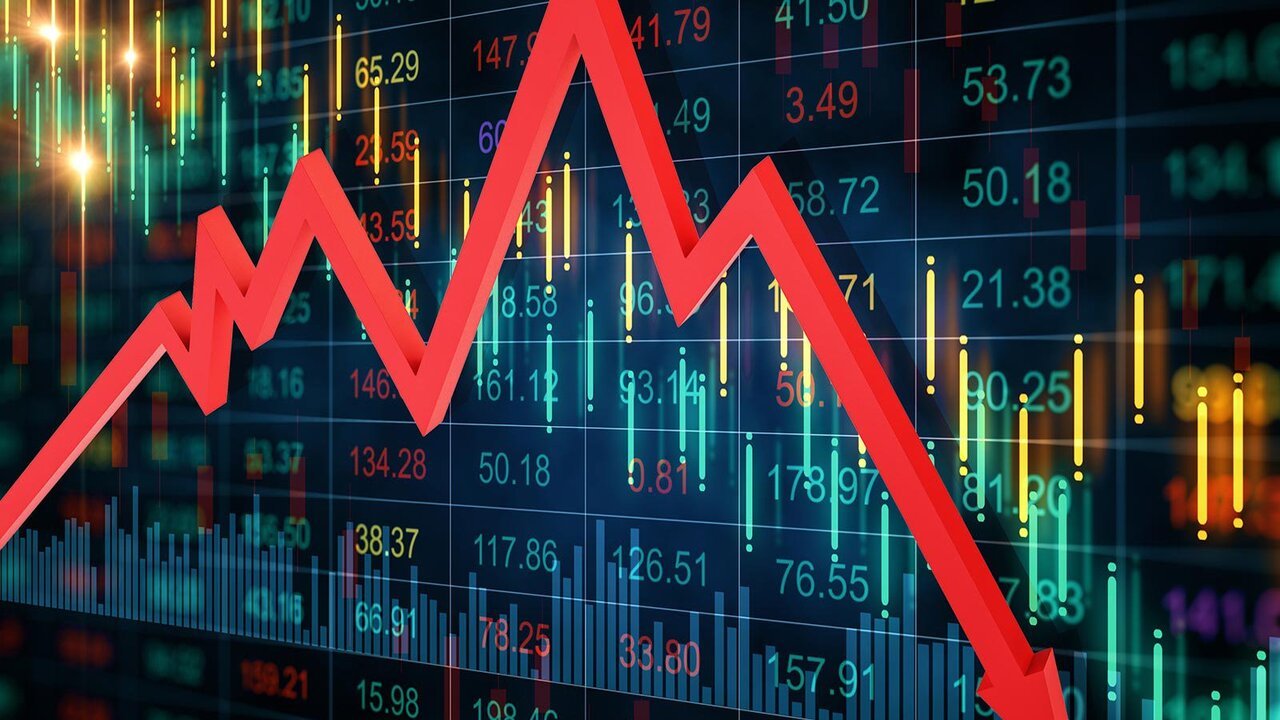Daily Stock Market News, Trends & Investment Insights.
Thinking about the stock market can feel a bit overwhelming, right? It’s like trying to figure out a puzzle with a lot of moving pieces. We’ll break down how the market works, what different signals mean, and some simple ideas to help you feel more confident. Whether you’re just starting out or have been watching for a while, understanding the basics of the stock market is a good step.
Thank you for reading this post, don't forget to subscribe!Key Takeaways
- The stock market moves in cycles, typically with four phases: accumulation, markup, distribution, and mark-down. Recognizing these phases can help investors.
- Major stock market indexes like the S&P 500, Nasdaq, and Dow Jones track the performance of groups of stocks and are often used to gauge the overall market’s health.
- Understanding bull markets (prices rising) and bear markets (prices falling) is important for setting expectations about stock market performance.
- Diversification, or spreading your investments across different types of stocks, is a key strategy to reduce risk in your portfolio.
- Long-term investing and staying invested through market ups and downs generally yields better results than trying to time the market.
Understanding Market Cycles

The stock market isn’t just a random collection of ups and downs; it actually moves through predictable phases, kind of like seasons. Knowing these cycles can really help you figure out when to buy and when to maybe hold back. Most people get caught up in the emotion of the moment, but understanding the cycle helps you stay more level-headed.
The Four Phases of Market Movement
Markets tend to go through four main stages. Think of it as a journey from the bottom, up to a peak, then back down, and finally hitting bottom again before starting over. It’s not always a smooth ride, and the length of each phase can vary a lot, from weeks to years.
- Accumulation: This is when the market has hit its lowest point. Smart money, like experienced investors and insiders, starts buying because they see prices as a bargain. Most people are still feeling pretty negative about the market during this time.
- Markup: Things start to turn around here. Prices begin to climb, and more investors, seeing the positive signs, start to jump in. The general mood shifts from fear to a bit more optimism, and eventually, greed can start to take over as prices go up faster.
- Distribution: This is a tricky phase. Prices might move sideways for a while, or even make one last push higher. Sellers start to gain the upper hand, and while some people are still optimistic, others are looking to sell their holdings, often at good profits.
- Mark-Down: This is the downward trend. Prices fall, and many investors who bought late in the markup phase start to panic and sell, often at a loss. This selling can be quite sharp.
It’s important to remember that trying to pinpoint the exact top or bottom of any market phase is incredibly difficult, even for seasoned pros. The goal isn’t perfect timing, but rather understanding the general direction and sentiment.
Recognizing Accumulation and Markup
Spotting the accumulation phase means looking for signs that selling pressure is easing and prices are stabilizing after a decline. You might see trading volumes pick up slightly as early buyers step in, even though the overall news and sentiment are still pretty gloomy. It’s a time when value investors, who look for stocks trading below their intrinsic worth, might find opportunities.
The markup phase is usually more obvious. You’ll see higher highs and higher lows in price charts, which is a technical sign that the trend is upward. More people start talking about the market positively, and the fear of missing out (FOMO) begins to drive more buying. This is when the majority of investors start participating, and prices can rise quite rapidly.
Navigating Distribution and Mark-Down
Distribution is often characterized by choppy price action. Prices might trade within a range, or you might see classic chart patterns like double tops form, suggesting that the upward momentum is struggling. Sentiment can be mixed – some are still bullish, while others are taking profits. It’s a period where smart money might be quietly selling.
The mark-down phase is when the trend clearly reverses to the downside. Prices fall, and negative sentiment takes hold. Many investors who held on hoping for a recovery might finally capitulate and sell. This phase can be sharp and painful, especially for those who bought near the peak of the previous markup phase. It’s during the depths of this phase that the seeds for the next accumulation period are often sown.
Key Market Indicators
Major Stock Market Indexes
When you’re trying to get a feel for how the stock market is doing overall, you’ll often hear about a few big names. These are like the thermometers for the entire market, or sometimes for specific parts of it, like tech companies or retailers. The ones you’ll probably hear about most are the S&P 500, the Nasdaq Composite, and the Dow Jones Industrial Average. They’re frequently used as stand-ins for the market’s general performance.
Investors use these indexes to see how their own investments are stacking up. Think of it as a benchmark. You can even invest in an entire index through something called an index fund or an ETF (Exchange Traded Fund). These funds usually just follow along with a specific index or a market sector.
Here are some of the most commonly followed indexes:
- Dow Jones Industrial Average (DJIA): This is one of the oldest and most well-known indexes, made up of 30 large, publicly traded companies. It’s seen as a gauge of the health of big U.S. businesses.
- S&P 500: This index includes about 500 of the largest U.S. companies, representing a broader slice of the market than the Dow. It’s often considered a better indicator of the overall U.S. stock market.
- Nasdaq Composite: This index is heavily weighted towards technology and growth companies, as it includes most of the stocks listed on the Nasdaq stock exchange. It can be more volatile than the S&P 500.
Understanding Bull vs. Bear Markets
Markets tend to move in cycles, and two terms you’ll hear a lot are “bull market” and “bear market.” They describe the general direction and sentiment of the market.
- Bull Market: This is when stock prices are generally rising, and investor confidence is high. People feel optimistic about the future and expect prices to keep going up. Bull markets typically signal economic growth.
- Bear Market: This is the opposite. It’s when stock prices are falling, usually by 20% or more from recent highs, and investor sentiment is negative. People are worried about the economy and expect prices to continue declining. Bear markets can signal an economic slowdown.
It’s important to remember that bull markets tend to last longer than bear markets. This is why many people focus on long-term investing, as historically, the market has trended upwards over extended periods.
Interpreting Market Corrections and Crashes
While bull and bear markets describe longer trends, corrections and crashes are sharper, more sudden downturns.
- Market Correction: This is generally defined as a drop of 10% to 20% in a major stock market index from its recent peak. Corrections are fairly common and are often seen as a healthy way for the market to reset after a period of rapid gains.
- Market Crash: This is a much more severe and rapid decline, typically a drop of more than 20% in a short period. Crashes are less frequent but can be quite alarming and are often associated with significant economic events or widespread panic.
When you see these kinds of drops, it’s easy to get caught up in the fear. But understanding that these movements are part of the market’s natural ebb and flow can help you stay calm and make more rational decisions about your investments. It’s not about predicting exactly when they’ll happen, but being prepared for the possibility.
Knowing these terms and what they represent helps you understand the context of market movements and how they might affect your investment strategy.
Strategies for Stock Market Success
Investing in the stock market can feel like a wild ride sometimes, with ups and downs that can make anyone a little nervous. But there are some solid ways to approach it that can help you stay on track and reach your financial goals. It’s not about predicting the future perfectly, but more about having a plan and sticking to it.
The Importance of Diversification
Think of diversification like not putting all your eggs in one basket. It means spreading your money across different types of investments. This way, if one investment isn’t doing well, others might be, helping to balance things out. It’s a time-tested way to lower your overall risk.
- Mix it up: Invest in different companies, industries, and even different types of assets like bonds or real estate.
- Reduce risk: When one part of your portfolio is down, another might be up, smoothing out the bumps.
- Capture opportunities: Different investments perform well at different times, so diversification lets you benefit from various market movements.
Long-Term Investing vs. Market Timing
Trying to guess when to buy low and sell high – known as market timing – is incredibly difficult. Most people who try end up missing out on good days, which can really hurt their long-term returns. Staying invested for the long haul is generally a more reliable path to growing your wealth. It’s more about time in the market than trying to time the market perfectly.
Trying to time the market is like trying to catch lightning in a bottle. You might get lucky once, but it’s not a sustainable strategy. Instead, focus on consistent investing over time.
Managing Risk and Emotional Investing
It’s natural to feel anxious when the market drops, but letting emotions drive your investment decisions can lead to mistakes. When you see your investments lose value, the urge to sell can be strong. However, history shows that markets do recover. It’s important to understand your own comfort level with risk and build a portfolio that aligns with it. This means making informed choices rather than reacting impulsively to market swings.
Getting Started in the Stock Market

So, you’re thinking about jumping into the stock market? It’s not as complicated as it might seem at first. The first real step is opening a brokerage account. Think of it like opening a bank account, but for your investments. It usually doesn’t take too long, maybe 15 minutes online with most places. You’ll need some basic personal information, and then you’re good to go. Many online brokers make this process pretty straightforward.
Opening a Brokerage Account
When you decide to open a brokerage account, you’ll find there are different types available. Some are better for beginners, while others offer more advanced tools for experienced traders. It’s worth looking into what each one offers in terms of fees, investment choices, and customer support. The key is to find a platform that fits your needs and comfort level.
How Stock Exchanges Function
When people talk about the stock market, they’re really talking about places where stocks are bought and sold. These are called stock exchanges, like the New York Stock Exchange (NYSE) or the Nasdaq. Companies list their shares on these exchanges, and that’s where buyers and sellers meet. The exchange keeps track of all the buying and selling, which helps determine the price of a stock. It’s basically a marketplace for company ownership. You don’t buy stocks directly from the company most of the time; you buy them on an exchange through your broker. Understanding how these exchanges work can give you a better picture of market movements.
Understanding Trading Hours
Most major stock exchanges, like the NYSE and Nasdaq, operate on a pretty standard schedule. They are typically open from 9:30 a.m. to 4 p.m. Eastern Time on weekdays. However, some brokers offer what’s called premarket and after-hours trading. This means you might be able to buy or sell stocks outside of those main hours, though it often comes with different risks and potentially less liquidity. If those standard hours don’t work for your schedule, it’s good to know these other options exist. It’s important to be aware of these times when you’re planning your trades or investments, especially if you’re looking to react to news that comes out after the market closes. You can find more details on trading hours and how they might affect your investments by looking into brokerage account information.
The stock market can seem a bit overwhelming when you’re just starting out. But by breaking it down into these basic steps – opening an account, understanding where stocks trade, and knowing the hours – it becomes much more manageable. Remember, most investors build a diversified portfolio and hold it for the long term, which doesn’t require constant attention to daily market fluctuations.
Today’s Stock Market Performance
Analyzing Current Market Trends
Looking at the market today, things are a bit mixed. We’re seeing some sectors doing quite well, while others are lagging a bit. It’s not a clear up or down day across the board, which is pretty typical. The overall sentiment seems to be one of cautious optimism, with investors keeping an eye on upcoming economic reports. It’s important to remember that daily movements are just a small part of the bigger picture. What matters more is how things are trending over weeks and months.
Sector-Specific Performance Insights
Let’s break down how different parts of the market are doing:
- Technology: This sector is showing some strength today, with major tech companies posting modest gains. There’s a lot of buzz around new product releases and advancements in AI, which seems to be driving interest.
- Energy: The energy sector is a bit more volatile. Oil prices have seen some movement, and that’s directly impacting how energy stocks are performing. It’s a sector to watch closely, especially with global supply and demand shifts.
- Consumer Staples: These are the companies that sell everyday necessities, like food and household goods. They tend to be more stable, and today is no different. They’re holding steady, providing a bit of a ballast to the market.
- Financials: Banks and other financial institutions are seeing some activity. Interest rate expectations are always a big factor here, and any hints from the Federal Reserve can really move the needle.
Economic Factors Influencing Today’s Market
Several economic factors are at play that are shaping today’s market performance. Inflation data, for instance, continues to be a major talking point. If inflation is higher than expected, it can lead to concerns about interest rates going up, which tends to make borrowing more expensive for companies and consumers alike.
We’re also seeing global events have a ripple effect. International trade relations and geopolitical stability can influence investor confidence and, consequently, stock prices. It’s a complex web, and sometimes a single news headline can shift the mood of the entire market.
Here’s a quick look at some key economic indicators that investors are watching:
- Consumer Price Index (CPI): This report gives us a snapshot of inflation. Today’s figures showed a slight uptick, which is keeping some investors on edge.
- Unemployment Claims: A low number of new claims generally suggests a healthy job market, which is good for consumer spending and, by extension, company profits.
- Manufacturing Output: This indicator tells us about the health of the industrial sector. Today’s report showed a slight contraction, which is a point of concern for some analysts.
Wrapping It Up
So, the stock market can feel like a wild ride sometimes, with ups and downs that make you want to either jump in or run away. We’ve talked about how things are moving now, some common trends to watch for, and a few simple ideas to keep in mind. Remember, trying to guess exactly when to buy or sell is super tough and often backfires. Most folks do best by staying put with their investments for the long haul, even when things get a little shaky. Keep learning, stay steady, and you’ll be in a much better spot.
Frequently Asked Questions
What are the main stages a stock market goes through?
The stock market moves in four main stages. First, there’s the ‘accumulation’ stage when prices are low and smart investors start buying. Then comes the ‘markup’ stage where prices start going up, and more people join in. After that is the ‘distribution’ stage where prices level off, and sellers start unloading. Finally, the ‘mark-down’ stage happens when prices fall significantly, and many people sell to avoid bigger losses.
What’s the difference between a bull market and a bear market?
A bull market is when stock prices are generally going up, showing that investors are feeling confident and the economy is likely growing. A bear market is the opposite, where prices are falling by about 20% or more, usually because investors are worried and the economy might slow down.
Why is diversification important when investing?
Diversification means spreading your money across different types of investments, like various stocks or funds. It’s like not putting all your eggs in one basket. If one investment doesn’t do well, others might, helping to protect your overall money from big losses.
Is it better to invest for the long term or try to time the market?
Trying to guess when to buy low and sell high (market timing) is very difficult and often leads to missed opportunities. Investing for the long term, meaning holding onto your investments through ups and downs, has historically been a more successful way to grow your money.
What is a stock market correction or crash?
A stock market correction is when prices drop by 10% or more. A crash is a much faster and sharper drop. While these can be scary, remember that markets tend to go up over the long run, and often recover from these dips.
How do I start investing in the stock market?
To begin, you need to open a brokerage account, which is similar to opening a bank account. Through this account, you can then buy and sell stocks listed on stock exchanges like the New York Stock Exchange or Nasdaq.













